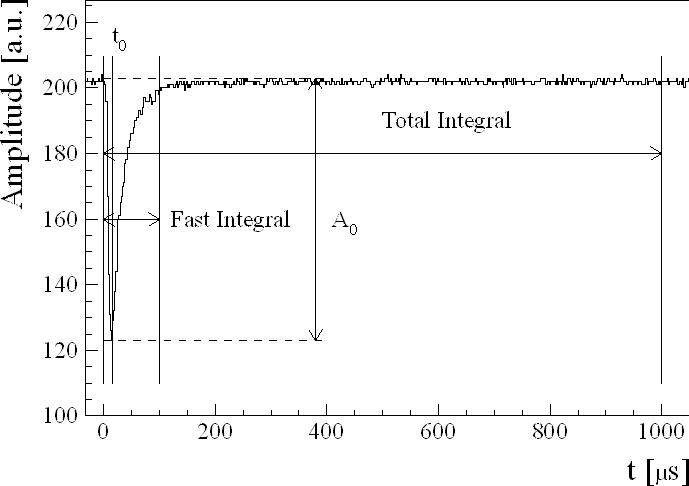






For the measurements, which are performed under similar conditions for each crystal, the bare crystal was air-coupled to a 3" EMI 9822QB photomultiplier. The response signal obtained with cosmic muons was fed into the Flash ADC of a digital scope (Hewlett Packard TDS 740), where two gate integrals were defined, a 100 ns long one (F) which would contain the fast component and a 1000 ns wide one (T) to obtain the overall yield. A personal computer using the built-in IEEE488 bus read out and analyzed the data. Along with the individual spectra, the ratio of charge collected during the two gating times was histogrammed and the mean value of that histogram gave the F/T ratio. After ca. 10 minutes of measuring time a sample of 1000 raw pulses was obtained. Since the contribution of the slow component should be low to allow a good timing resolution and to avoid pileup, the ratio of the fast component to the total light yield was required to exceed 70%.

After some difficulties in the beginning of the delivery process we were supplied with CsI crystals showing an average F/T close to 80% thanks to better raw material and improved growing conditions.





